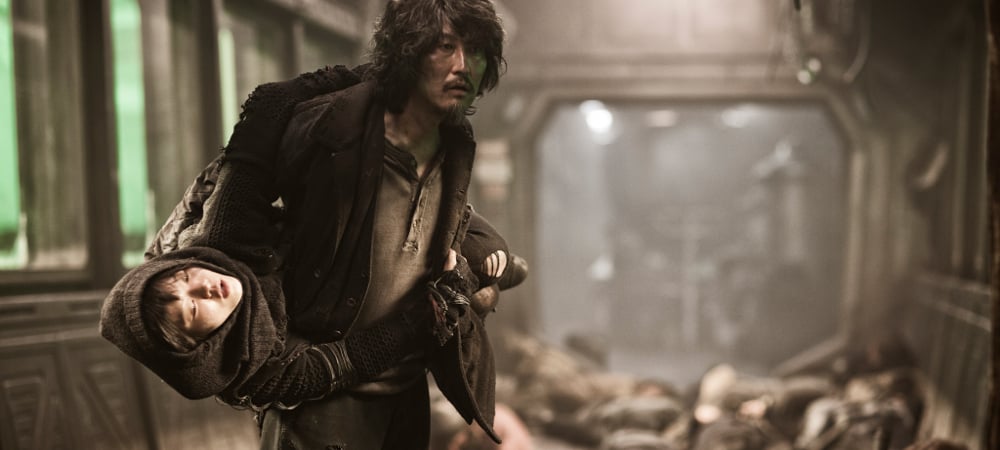A la carte: Train-ing day
I loved Thirty Flights of Loving, the beautiful fifteen-minute game I sometimes think about when I read press releases that exclaim, too happy with themselves, “hundreds of hours of gameplay!” Among its good qualities was its use of French New Wave-inspired editing, quick jump cuts that played with its temporal explorations, leaving the act of mental closure to stitch together anything from the last two seconds to the last two weeks.
Yes, I studied film once and watched Breathless. The influence of movies on games is easy to point out without reaching for black-and-white French films with frenetic editing, though. Look at any major releases’ cutscenes full of inscrutable, same-y action sequences, and then watch a Michael Bay film (and read this), or the nerd-appeasing superhero flicks we now have to live with because we made the honest mistake of liking Iron Man.
On the other hand, videogames’ influence on film is harder to spot, as you wade past Gamer or Pixels or Michael Cera fighting other human beings as combo meters tick overhead in the live-action Scott Pilgrim.
Bong Joon-ho’s Snowpiercer, however, shares structural elements with games (as well as an interest in the dystopic).

After I had watched Snowpiercer, I ran into a pocket of internet people referring to it as “basically BioShock the movie.” Naturally, I looked hard down my big, long nose at those people (because I am tall and strong), as a huge fan of Bong Joon-ho and as someone whose fiction awareness goes back further than 2007. I’d been waiting almost a year as the film sat in an editing bay waiting to be chopped up for US release (it wasn’t, thanks to its director).
This preserved the film’s careful structure. Exactly half of it takes place in sub-prole squalor, half in something out of a Terry Gilliam film. The contrast is stark, the message not subtle, following a tradition of classism coming under scrutiny by speculative fiction. Snowpiercer is based on a 1982 French graphic novel, after all.
You can see BioShock — which, after Infinite, I need to remember is still a good game — in Snowpiercer. Mostly you see the shared influences beyond games.
Snowpiercer is shot, with a flat, forward momentum that brings to mind the progression of 2D side-scrolling games (and also the train itself). It’s like an extrapolated version of the hallway fight scene in Oldboy, with enough angle variety to make sure it doesn’t quite look like you’re just headed right, even thought that flattened, simple goal is it. You are in the back of the train. Get to the front of the train.
“You” is Chris Evans, though. Let’s not forget this is not a game. Still, rightward progress is the win condition, how you go about righting wrongs on a systemic, structural level. It’s why Chris Evans is always shown going forward (until he isn’t).
Sometimes that frames itself as into the camera, but mostly that means he’s always moving to the right. The distinct train cars, too, are like levels in a game. It isn’t just the halfway, poverty vs. opulence dichotomy. Each car is discrete. The slave car. The indoctrinating children’s classroom. The drugs- and furs-laced “night” club. They are “levels,” neatly, the sort of self-contained, surreal and disjointed places games often put you in without context.

You can see this a little in Transistor‘s alternative sci-fi world, too. Therein is a stark contrast between a human-designed city and the erasure done by the Process. In the 2D loading sequences/conversation reprieves between areas, you’re always moving to the right, too, until you turn back around and see a changed, blanked version of the world. Fairview’s disorienting M.C. Escher perspective.
Soon after establishing “go right” as a central mechanic in design, it was toyed with. Metroid starts you off in the middle of the screen, reinforcing the design philosophy of an entire sub-genre with that clever decision: you can go left. You can (and should) go everywhere. Even contemporary classic platformers — from Rayman to LittleBigPlanet — will often hide prize baubles to the left, at the beginning of stages, even though the design doesn’t encourage you to look.
Snowpiercer‘s “final boss” waits at the end for the myopic, gruff, handsome hero. Horrors, too. Meanwhile, the movie’s secret star, the lateral thinker and security tinkerer, shows that “right” isn’t always right. There are alternative paths. Paths those too concerned with “progress,” too concerned with winning, are blind to.





Published: Aug 7, 2014 02:00 pm